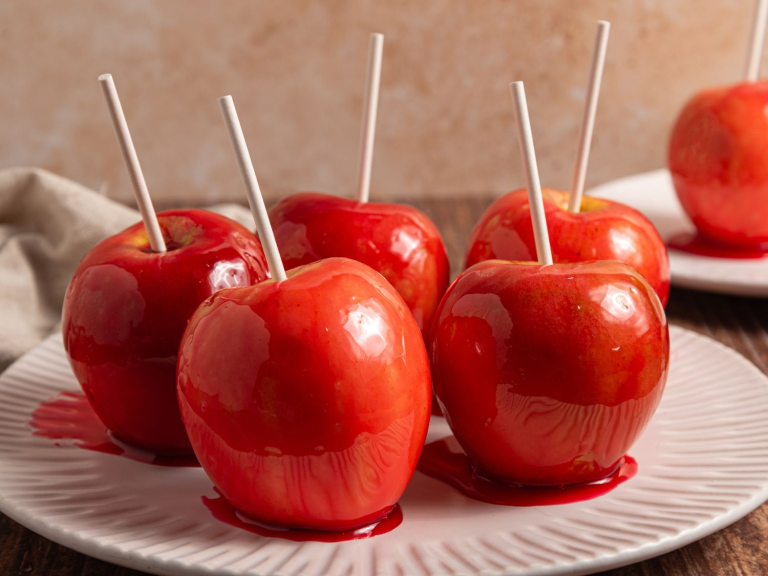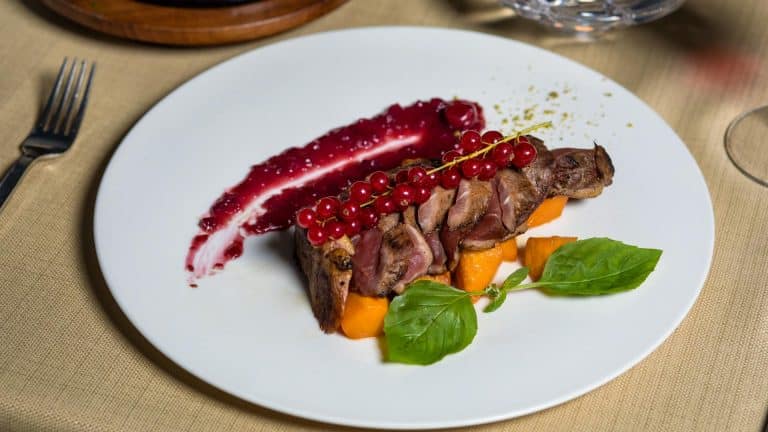Caramel apples are one of those desserts that immediately signal the arrival of fall. From school events to Halloween gatherings, the combination of crisp apples and sweet caramel has become a seasonal staple.
Apples themselves have long been central to autumn cooking traditions, often prepared in simple but sturdy cookware. For example, heating sugar in a Dutch oven was a common way to make caramel that has carried over in many family to today, since the heavy pot can maintain an even temperature.
The story of caramel apples stretches back more than a century, connecting culinary experimentation with cultural tradition. Exploring their origins, rise in popularity, and modern variations reveals how this dessert secured its place as a fall favorite.
What Are the Origins of Caramel Apples?
The creation of caramel apples can be traced back to the early 20th century. In 1908, William Kolb, a Newark, New Jersey, candy maker, experimented with leftover caramel by dipping apples into the mixture.
The result was a treat that quickly caught customers’ attention in his shop. Unlike the glossy candied apples that came earlier, caramel apples offered a softer, richer coating that paired well with the tartness of fresh fruit.
As the idea spread, caramel apples became a novelty item in candy stores across the United States. Their simplicity made them easy to produce and attractive to families looking for a seasonal snack.
The dessert also fits naturally with the abundance of apples harvested each fall. By the mid-20th century, caramel apples were no longer a regional specialty but a widely enjoyed seasonal indulgence. This moment marked the beginning of their strong association with autumn traditions.
Caramel Apples in American Fall Traditions
Caramel apples became more than just a sweet experiment; they evolved into a symbol of seasonal celebration. By the 1950s, they were a fixture at Halloween parties, fall carnivals, and county fairs.
Children and adults alike enjoyed the novelty of biting into an apple coated in sticky caramel, which was both festive and practical. The combination of fresh produce and a sugar-based coating made it a natural choice for cool-weather events where apples were abundant.
Schools and community groups also embraced caramel apples as an easy fundraiser. Preparing batches required little more than apples, sticks, and melted caramel, which made them affordable for large gatherings. Regional traditions developed as well, with some areas favoring toppings like crushed peanuts while others preferred simple caramel coatings.
Commercialization and Mass Production
The popularity of caramel apples eventually attracted commercial attention. By the 1960s, companies began developing pre-packaged caramel apple kits that allowed families to easily make the treat at home. These kits usually included sheets of caramel that could be wrapped around apples and heated in the oven, reducing the need for homemade caramel.
At the same time, grocery stores began selling ready-made caramel apples, often coated with peanuts or sprinkles. This shift made caramel apples available far beyond local fairs or candy shops, giving them a place in mainstream food culture.
Variations and Modern Takes
As caramel apples gained popularity, creative variations emerged. Rolling the caramel-coated apple in crushed nuts became a classic upgrade, adding texture and flavor. Other additions followed, such as chocolate drizzles, candy bits, and even cookie crumbs. These toppings made each apple customizable, appealing to a wider range of tastes.
In recent decades, specialty shops have elevated caramel apples into gourmet products. Some use premium chocolate, sea salt, or flavored caramels to create more indulgent options. Others emphasize presentation, packaging apples as seasonal gifts for holidays and parties.
Online retailers now ship caramel apples nationwide, so the dessert can be enjoyed without attending a fair or carnival. Despite the innovations, the basic formula has stayed the same: fresh apples coated in caramel, rooted in a tradition that continues to adapt.
Caramel Apples Around the World
While caramel apples are a signature treat in the United States, other countries enjoy similar creations. Toffee apples are a Halloween staple in the United Kingdom, offering a harder, glossier coating than caramel. In parts of Asia, candied fruits such as strawberries or hawthorn berries share the same principle of coating fresh produce in sugar.
Sweet Tradition That Sticks Around
Caramel apples may have started as a small experiment in a candy shop, but they quickly grew into a dessert tied to community, celebration, and creativity. From their roots in early 20th-century kitchens to their place in today’s gourmet markets, they remain a recognizable marker of fall.
As autumn traditions continue to change, caramel apples hold steady as a nostalgic treat and a flexible dessert that adapts to new tastes. Their history demonstrates how food traditions become part of seasonal identity. For many, fall still feels incomplete without the familiar crunch and sweetness of a caramel apple.













